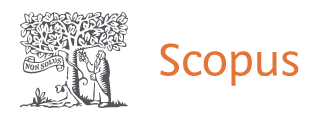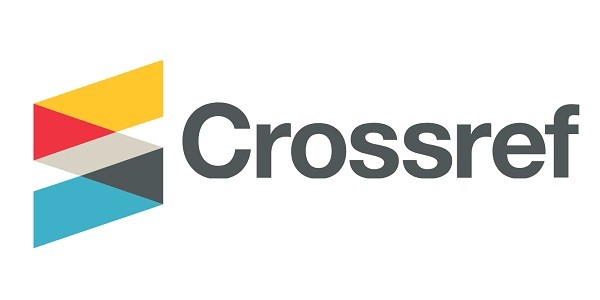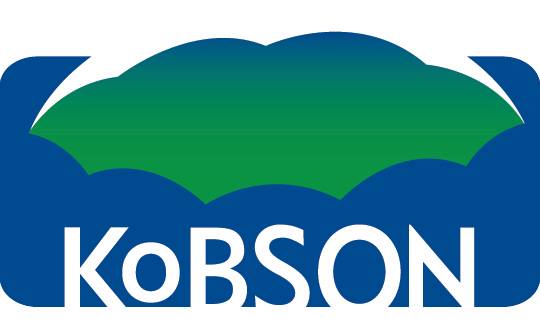DOI: 10.5937/jaes16-17333
This is an open access article distributed under the CC BY-NC-ND 4.0 terms and conditions.

Volume 16 article 523 pages: 233 - 241
In this article, extracts from aerial part of Tamarix hispida Wild harvested in 2016 in the Ile District of the Almaty Region during the fl owering period are considered. A comparative analysis of chemical composition of extracts obtained with three extracting agents constituting ethyl alcohol solutions concentrated differently (96%, 70%, 50%) has been made; the extracts were studied by high-performance liquid chromatography with a mass-selective detector Aligent Technologies 6400 Series Triple Quadrupole LC/MS, and were identifi ed by mass spectra and retention times using the NIST library and Wiley LC/MS. In all the three extracts, various phthalic esters are dominant compounds, those are: Phthalicacid, octyl 2-pentylester in 96% extract, 1,2-Benzenedicarboxylicacid, decyloctylester in 70% extract, and Phthalicacid, hexadecyl 2-methylbutylester in 50% extract; also, a high content of alkaloids of various groups was identifi ed in all the extracts, for example, 4-t-Butyl-2-(4-methoxy-phenyl)-6-p-tolyl-pyridine in 96% extract, Morphinan- 4,6-diol, N-formyl-6-acetate (ester) in 70% extract, and 7-Methylthieno [3,2-b] pyridine in 50% extract. All of the above parameters are quite high for alkaloids in wild plants growing in Central Asia, while it should be noted that the highest alkaloid content is found in 70% alcohol extracts from aerial part of Tamarix hispida. Nitrogen-containing compounds are present in all the three extracts with the largest variety of compounds, with both nitrogen-containing dyes and alkaloids present therein. Apart from the above, a number of noteworthy metabolites containing halogens, such as Methyl (((1E)-2-(4-chlorophenyl)-3-[4-(2-furoyl)-1-piperazinyl]-3-thioxo-1-propenyl) amino) acetate (4,4%), Alclometasone Dipropionate have been identifi ed in the 50% Tamarix hispida aerial part extract. Analysis of the literature data allows for a conclusion that a high content of nitrogen-containing compounds is characteristic of the Chenopodioídeae; thus, for example, plants of the Sueda genus, Halostachys and Ephedra are sources of alkaloids of the piperidine and pyrrole, pyrolidinium and morphine groups; however, the content of organic sulfur and organochlorine compounds in the Tamarix genus was not previously reported, although these classes are quite common in the Embryophytes.
1. Vinogradov, A.P. (1952).
Osnovnye zakonomernosti v raspredelenii mikrojelementov mezhdu rastenijami i
sredoj, Mikrojelementy vzhizni rastenij i zhivotnyh. Moscow: ANSSSR.
2. Bezchasnjuk, E.M., Djachenko,
V.V., Kucher, O.V. (2003). Process jekstragirovanija iz lekarstvennogo rastitel'nogo
syr'ja. Farmakom, vol. 1, 54-56.
3. Sokolov, L.D. (1986).
Rastitel'nye resursy SSSR: Cvetkovye rastenija, ih himicheskij sostav, ispol'zovanie;
Semejstva Paeoniaciae-Thymelaeaceae. Leningrad: Nauka.
4. Qaiser, M. (1983). Iran. Joum.
Bot, vol. 2, 21-68.
5. Venturella, G., Baum, B.,
Mandracchia, G. (2007). Fl. Medit, vol. 17, 25-46.
6. Sharma, S.K., Parmar, V.S.
(1998). Journal of Scientific and Industrial Research, vol. 57, 873-890.
7. Umbetova, A.K., Choudhary,
I.M., Burasheva, G.S., Sultanova, N.A., Abilov, Z.A. (2006). Triterpenoids of genus
Tamarix. Chemistry of Natural compounds, 42: 173-176. DOI
0009-3130/06/4203-0332
8. Sultanova, N.A., Makhmoor, T.,
Yasin A., Abilov, Z.A., Omurkanzinova, V.B., Atta-ur-Rahman, Choudhary, M.I.
(2004). Isotamarixen – a new antioxidant and prolylendopeptidase – inhibiting
triterpenoid from Tamarix hispida. Planta Med, vol. 70, 65-67. DOI 10.1055/s-2004-815458
9. Milovanova, L.N. (2002).
Tehnologija izgotovlenij alekarstvennyh form. Rostov na Donu: Medicina.
10. Georgievskij, V.P., Dihtjarev,
S.I., Gubin, Ju.I. (1999). Fitohimija v Ukraine – itogiiperspektivy. Farmakom, vol.
3, 39-43.
11. Qingqing, Z., Junhong, B.,
Qiang, L., Qiongqiong, L., Zhaoqin, G., Junjing, W. (2005). Spatial and
Seasonal Variations of Soil Carbon and Nitrogen Content and Stock in a Tidal
Salt Marsh with Tamarix chinensis. China: Wetland. DOI 10.1007/s13157-015-0647-1
12. Lite, S.J., Marler, R.,
Paradzick, C., Shafroth, P.B., Shorrock, D., White, J.M., White, M.S. (2007).
Altered stream-fl ow regimes and invasive plant species: the Tamarix case,
Juliet C. Stromberg. Global Ecology and Biogeography, vol. 16, 381–393. DOI:
10.1111/j.1466 8238.2007.00297.x
13. Mey, E., Wilson, H., Mycock,
D., Weiersbye, I.M. (2016). The salt glands of Tamarix usneoides. International
Journal of Phytoremediation, vol. 19, 587-595. DOI: 10.1080/15226514.2016.1244163
14. Ksouri, R., Falleh, H.,
Megdiche, W., Trabelsi, N., Mhamdi, B., Chaieb, K., Bakrouf, A., Magné, C.,
Abdelly, C. (2009). Antioxidant and antimicrobial activities of the edible
medicinal halophyte Tamarix gallica L. and related polyphenolic constituents.
Food Chem. Toxicol., vol. 47, 2083–2091. doi:10.1016/j. fct.2009.05.040
15. Sehrawat, A., Sultana, S.
(2006). Evaluation of possible mechanisms of protective role of Tamarix gallica
against DEN initiated and 2-AAF promoted hepatocarcinogenesis in male Wistar
rats. Life Sci., vol. 79, 1456–1465. doi:10.1016/j.lfs.2006.04.009
16. Souliman, A.M.A., Barakat,
H.H., El-Mousallamy, A.M.D., Marzouk, M.S.A., Nawwar, M.A.M. (1991). Phenolics
from the bark of Tamarix gallica. Phytochemistry, vol. 30, 3763–3766.
17. Drabu, S., Chaturvedi, S.,
Sharma, M. (2012). Tamarix gallica—an overview. Asian. J. Pharm. Clin. Res.,
vol. 5, 17–19.
18. Boulaabaa, M., Snoussi, M.,
Saadaa, M., Mkadmini, K., Smaoui, A., Abdelly, C., Ksouri, R. (2015). Antimicrobial
activities and phytochemical analysis of Tamarix gallica extracts. Industrial
Crops and Products, vol. 76, 1114–1122. doi.org/10.1016/j.indcrop. 2015.08.020
0926-6690
19. Boulaaba, M., Tsolmon, S.,
Ksouri, R., Han, J., Kawada, K., Smaoui, A., Abdelly, C., Isoda, H. (2013b). Anticancer
effect of Tamarix gallica extracts on human colon cancer cells involves Erk1/2
and p38 action on G2/M cell cycle arrest. Cytotechnology, vol. 65, 927–936. DOI
10.1007/s10616-013-9564-4
20. Yang, H., Zhou, Y., Liu, H.,
Du, H., Ma, Z., Li, C., Zhou, L. (2009). Inhibitory activity of the extracts
and fractions from six chenopodiaceous plants on plant pathogens. Nat. Prod. Res.
Dev., vol. 21, 744-747.
21. Sun, L.P., Yin, Z.D., Fu,
Z.S., Zheng, S.Z., Shen, X.W. (1996). The chemical constituents of
Elsholtziadensa Benth. Acta Bot. Sin, vol. 38, 672-676.
22. Liu, H., Wang, J., Zhao, J.,
Lu, S., Wang, J., Jiang, W., Ma, Z., Zhou, L. (2009). Isoquinoline alkaloids from
Macleayacordata active against plant microbial pathogens. Nat. Prod. Commun.,
vol. 4, 1557-1560.
23. Sun, B., Richardo-da-Silvia,
J.M., Spranger, I. (1998). Critical factors of vanillin assayforcatechins and
proanthocyanidins. Journal of Agriculture and Food Chemistry, vol. 46,
4267–4274.
24. Baydar, N.G., Özkan, G.,
Sagdiç, O. (2004). Total phenolic contents and antibacterialactivities of grapes
(Vitisvinifera L.) extracts. Food Control, vol. 15, 335–339. doi:10.1016/S0956-7135(03)00083-5
25. Djeridane, A., Yousfi , M.,
Nadjemi, B., Boutassouna, D., Stocker, P., Vidal, N. (2006). Antioxidant
activity of some Algerian medicinal plants extracts containing phenolic
compounds. Food Chemistry, vol. 97, 654–660. doi:10.1016/j.foodchem.2005.04.028
26. Shual, L., Sheng-Iun, D.,
Ruo-Yun, C., DeQuan, Yu. (2005). Triterpenoids from the stems of
Myricariapaniculata. J. of Asian Natural Products Research, vol. 7, 253-257.
DOI: 10.1080/10286020410001721168 Journal of Applied Engineering Science Vol.
16, No. 2, 2018 ISSN 1451-4117 241
27. Razdan, T., Harwar, S.,
Kachroo, V., Houl, G.L. (1982). Phytolaecanol and epiacetylaleuritolic acids. Two
terpenoids from Phytolaccaacinosa. Phytochemistry, vol. 21, 2339- 2342.
28. Engvil, K.C. (1986). Chlorine
- containing natural compounds in higher plants. Phyrochemistry, vol. 25,
781-791.
29. Gribble, G.W. (2000). The
natural production of organobromine compounds. Environ. Sci. & Pollut. Res.,
vol. 7, 37-49.
30. Gribble, G.W. (2002). The
handbook of environmental chemistry Vol. 3, Part Organofl uorines. Berlin: Springer-Verlag.
31. Virtanen, A.I. (1962). Some
Organic Sulfur Compounds in Vegetables and FodderPlants and their Signifi cance
in Human Nutrition. Angew. Chem. internat., vol. 6, 299-306.
32. Virtanen, A.I. (1965). Studies
on organic sulphur compounds and other labile substances in plants. Phytochemistry,
vol. 4,207-228.
33. SauWah, Ng, Chor, K.C., Yan Wo
Chan, A., Wing Lai Mak, T. (2013). Simultaneous detection of 22 toxic plant
alkaloids (aconitumalkaloids, solanaceoustropane alkaloids, sophora alkaloids,
strychnosalkaloids and colchicine) in human urine and herbal samples
usingliquid chromatography–tandem mass spectrometry. Journal of
ChromatographyB, vol. 942–943,
63–69..http://dx.doi.org/10.1016/j. jchromb.2013.10.020
34. Mali, S., Borges, R.M. (2013).
Phenolics, fi bre, alkaloids, saponins, andcyanogenic glycosides in a seasonal cloud
forest in India. Biochemical Systematics and Ecology, vol. 31, 1221–1246.
doi:10.1016/ S0305-1978(03)00079-6 Yerbol Iskhanov - Chemical compositional
analysis of the Tamarix hispida aerial part extract obtained in ethanol
solutions of different concentration
35. O’Hagan, D. (2000). Pyrrole,
pyrrolidine, pyridine, piperidine and tropane alkaloids. Nat. Prod. Rep, vol.
17:, 435–446. DOI: 10.1039/a707613d
36. [36] Özçelik, B., Kartal, M.,
Orhan, I. (2011). Cytotoxicity, antiviral and antimicrobial activities of alkaloids,
fl avonoids, and phenolic acids. Pharmaceutical Biology, vol. 49, 396–402. DOI:
10.3109/13880209.2010.519390
37. Kyung, K.H., Fleming, H.P.
(1997). Antimicrobial Activity-of Sulfur Compounds Derived from Cabbage. Journal
of Food Protection, vol. 60, 67-71. doi. org/10.4315/0362-028X 60.1.67
38. Kyung, K.H., Lee, Y.C. (2001).
Antimicrobial activities of sulfur compounds derived from s-alk (en)
yl-l-cysteinesulfoxides in allium and brassica. Food reviews international,
vol. 17, 183–198. doi.org/10.1081/FRI- 100000268
39. Karker, M., Tommasi, N.,
Smaoui, A., Abdelly, C., Ksouri, R., Braca, A. (2016). New Sulphated Flavonoids
from Tamarix africana and Biological Activities of Its Polar Extract. Planta
Med, vol. 82, 1374–1380. DOI http://dx.doi.org/ 10.1055/s-0042-111520
40. Chaturvedi, S, Drabu, S,
Sharma, M. (2012). Anti-inflammatory and anti-analgesic activity of Tamarix gallica.
Int J Pharm Pharm Sci, vol. 3, 653-658. doi. org/10.1024/0300-9831.77.1.41






